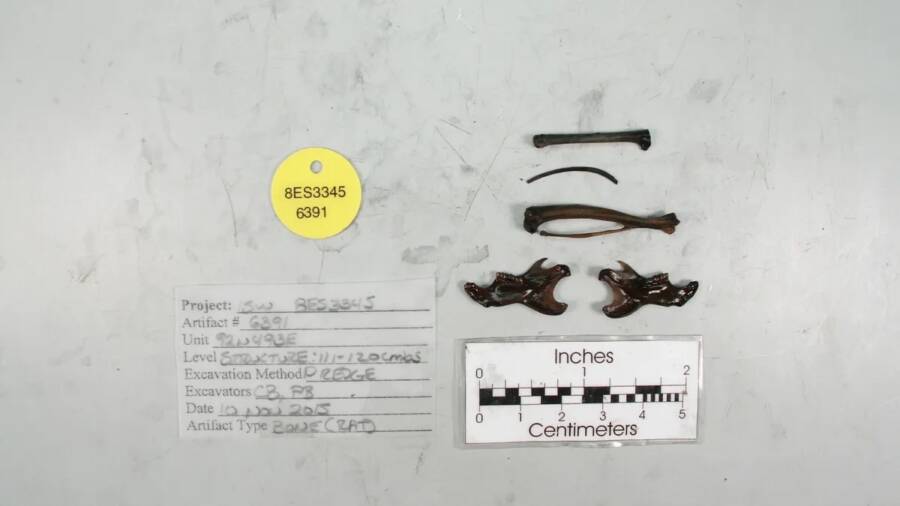Cat bones found among the wreckage of a Spanish ship from 1559 represent the earliest known example of domesticated cats in what is now the United States.
Ludemeula Fernandes / UnsplashThe first tame cats in North America probably came on ships alongside Spanish conquistador .
numberless studies have examined the historical link between mankind and dogs , give their status as “ human ’s best admirer . ” computed axial tomography , however , have n’t received the same archaeological care despite also endure alongside humans for thousands of years , largely because they are more independent and offer less insight into society .
That said , a newfangled cogitation issue inAmerican Antiquityclaims to have find the earliest grounds of domesticated Caterpillar in what ’s now the United States . The felines perished in a wreck off the slide of Florida in 1559 , but their remains are providing refreshful perceptiveness into the history of Arabian tea in America .

Ludemeula Fernandes/UnsplashThe first domesticated cats in North America likely came on ships alongside Spanish conquistadors.
The History Of Domestic Cats In The New World
cat , like many other domesticated animals , made their way to the New World on European ship . However , it was n’t clear when exactly the first felines were insert to North America .
harmonise to this latest study , cats had spread from the Middle East to the Mediterranean watershed by 400 B.C.E. and were then introduced to the Canary Islands around the fifteenth century to help hold gnawer and lapin populations , but there was never any clear , direct connection between either of these hombre populations and domestic cats in the Americas .
Some have suggested cats could have been on control panel Christopher Columbus ’ ships , but there are no criminal record to confirm this . There is documentation of cat remain in the Caribbean startle around 1492 . Domestic qat may have also been transported from the Canary Islands to La Isabela in the Dominican Republic , the first Spanish settlement and townsfolk in the Americas , in 1493 . grounds of cats in what is now Haiti also supports the claim that Columbus had bozo aboard his ship .

University of British Columbia Library Special CollectionsShip’s cats remained common throughout the 20th century. Pictured here is Captain A. J. Hailey and his cat on the RMSEmpress of Canadaaround 1920.
University of British Columbia Library Special CollectionsShip ’s cats remained usual throughout the 20th century . picture here is Captain A. J. Hailey and his cat on the RMSEmpress of Canadaaround 1920 .
Columbus never ill-use ft on the mainland of North America , though .
However , in 2006 , researchers observe the clay of two domesticated cats among the wreckage of a ship that sink off the sea-coast of Florida in September 1559 . The vessel , Emanuel Point II , had been part of a settlement expedition led by Spanish conquistador Tristán de Luna y Arellano when it was destroyed by a hurricane while anchor in Pensacola Bay .

John BrattenCat and rat bones found among the wreckage of the Emanuel Point II.
investigator have now take apart those feline remain — and they believe the big cat on the Emanuel Point II may have been the very first to make it in what ’s now the U.S.
The Domestic Cat Remains Found In A Spanish Shipwreck
The inquiry team conducted a number of tests to gather an understanding of what the cat that perished aboard the Emanuel Point II ate , how crowing they grew , and what role they serve on the Spanish vas .
The corpse belonged to one adult guy and one puerile cat . Analysis confirm that they were indeed domestic quat ( Felis catus ) , and genetical testing show that they had European heritage . Thus , they must have travel over the Atlantic on a Spanish ship — or were descended from cats who had previously done so . The animate being may have boarded the watercraft unbeknownst to the crew , or they may have been brought on purposely for pest control .
John BrattenCat and skunk bone determine among the wreckage of the Emanuel Point II .
Researchers also determined what the grownup cat ’s diet had consisted of — and were surprised to take that it was n’t mostly rats . Instead , it had eaten mainly fish and possibly even domesticated meat , a diet interchangeable to that of the Spanish sailors .
The bunch members may have shared their nutrient with the cat out of necessity if there were n’t enough rats and mice onboard to affirm the felines . Or , they could have kick in the creatures bit out of affection .
Today , one in every three U.S. household has a pet cat — but feline ownership in North America ostensibly all begin with the two cats who died on the Emanuel Point II .
After scan about how domesticated Arabian tea made their elbow room to North America , condition out seven place from around the populace that have become completelyoverrun with cats . Then , take a tone atAoshima , Japan ’s famous “ Cat Island . ”